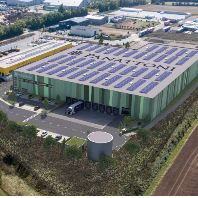Commercial property sectors in countries with stronger domestic economies are likely to be stable in the short-term, especially where there has been limited new construction. In countries with export-oriented economies, the uncertain global economic outlook is likely to inhibit demand - according to Jones Lang LaSalle’s second quarter Asia Pacific Property Digest, which was released recently.
“With uncertainty on the global economic outlook, the prospect of increased demand for office and retail space is likely to be greater in cities in those countries with stronger domestic economies†said Mr. Bellman, Head of Research - Asia Pacific at Jones Lang LaSalle. “This suggests demand will be stronger in cities in China, Korea, India and Australia in the near term.â€
Office Markets in the Second Quarter
“With some exceptions, demand-side weakness persists for commercial real estate throughout much of Asia Pacific,†said Tim Bellman. “This resulted in stable or declining rents in most commercial office markets in most cities in the second quarterâ€.
In the second quarter the office vacancy rate declined most significantly to 10.2% in Taipei (-1.8%) and to 24.9% in Bangkok (-1.1%). In Taipei this was a result of occupiers upgrading from Grade B to Grade A space. In Bangkok it was largely a result of expansion of insurance, manufacturing and consultancy companies.
Vacancy rates increased most significantly in two major financial centers: in Hong Kong Central to 9.6% (+1.7%) and in the Tokyo CBD to 6.5% (+1.5%). In both cities this was partly a result of new completions, Chater House in Hong Kong and Izumi Garden Tower in Tokyo. It was also partly a result of some space being returned by tenants to the landlord on the expiration of the lease.
Retail Markets in the Second Quarter
“Generally demand for retail space increased modestly in most Asia Pacific cities in the second quarter, with food and beverage retailers providing much of the new demand†said Mr. Bellman.
One striking exception was Shanghai where there was strong net absorption of modern retail space driven by strongly rising domestic consumption. Two new buildings were completed in the second quarter in Shanghai: Ciros Plaza in Huangpu District and Beethoven Plaza in Changning District. These added over 40,000 square meters of retail space, yet the overall vacancy rate declined to 14% with strong demand. Rents were broadly stable (+0.6%) at an average of US$961 per square meter per annum.
Luxury Residential Markets in the Second Quarter
“Most expatriate leasing markets remained subdued in the second quarter†said Mr. Bellman. “Multinational companies have been reducing headcount and keeping tight control on housing budgetsâ€
Luxury rents declined 4.1% on Hong Kong Island, 3.9% in Mumbai (South and Central) and 1.4% in Makati CBD and Fringe Areas.
Bangkok, Jakarta and Shanghai were exceptions. With active leasing markets and, in Bangkok with limited new supply, vacancy rates in these cities were lower and there was modest upward pressure on rents.
For more information please visit www.joneslanglasalle.com.
(source: Jones Lang LaSalle)






